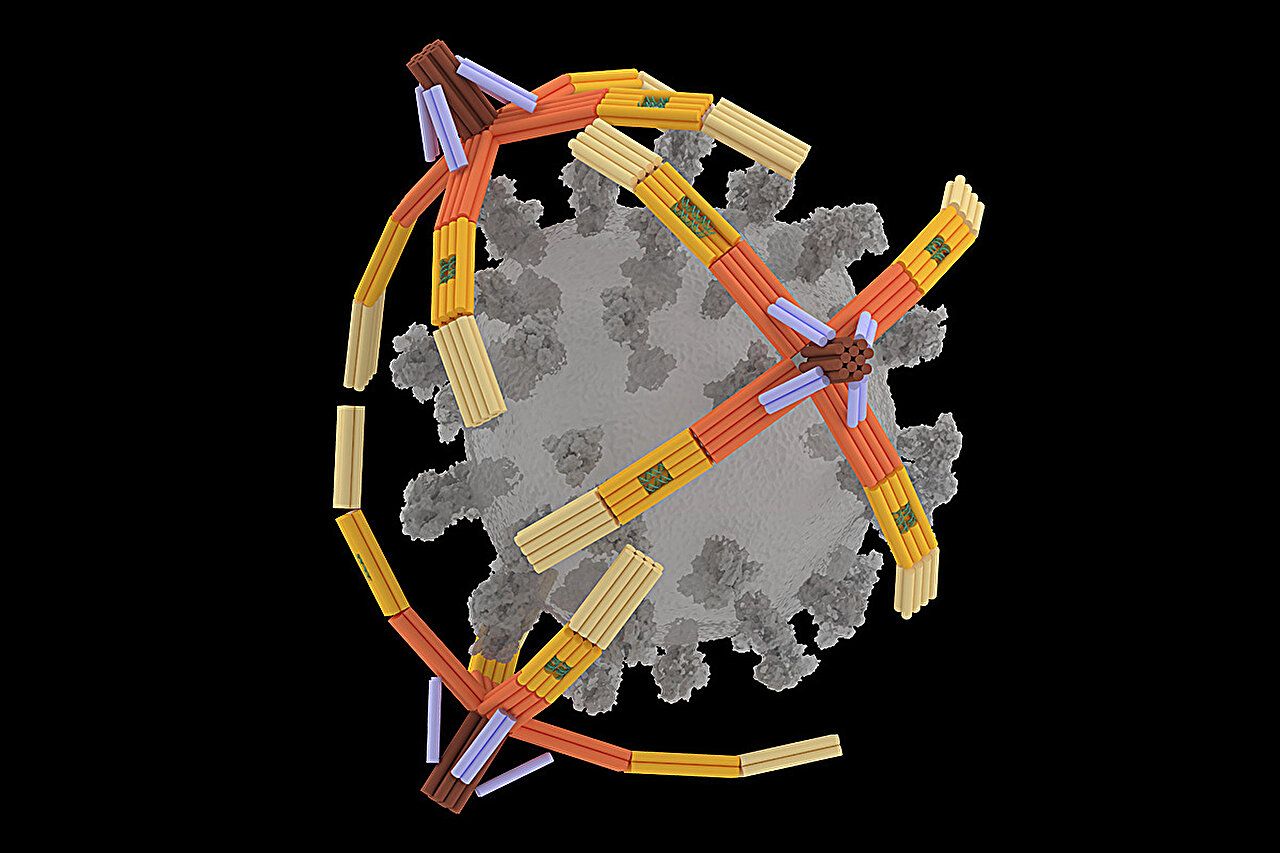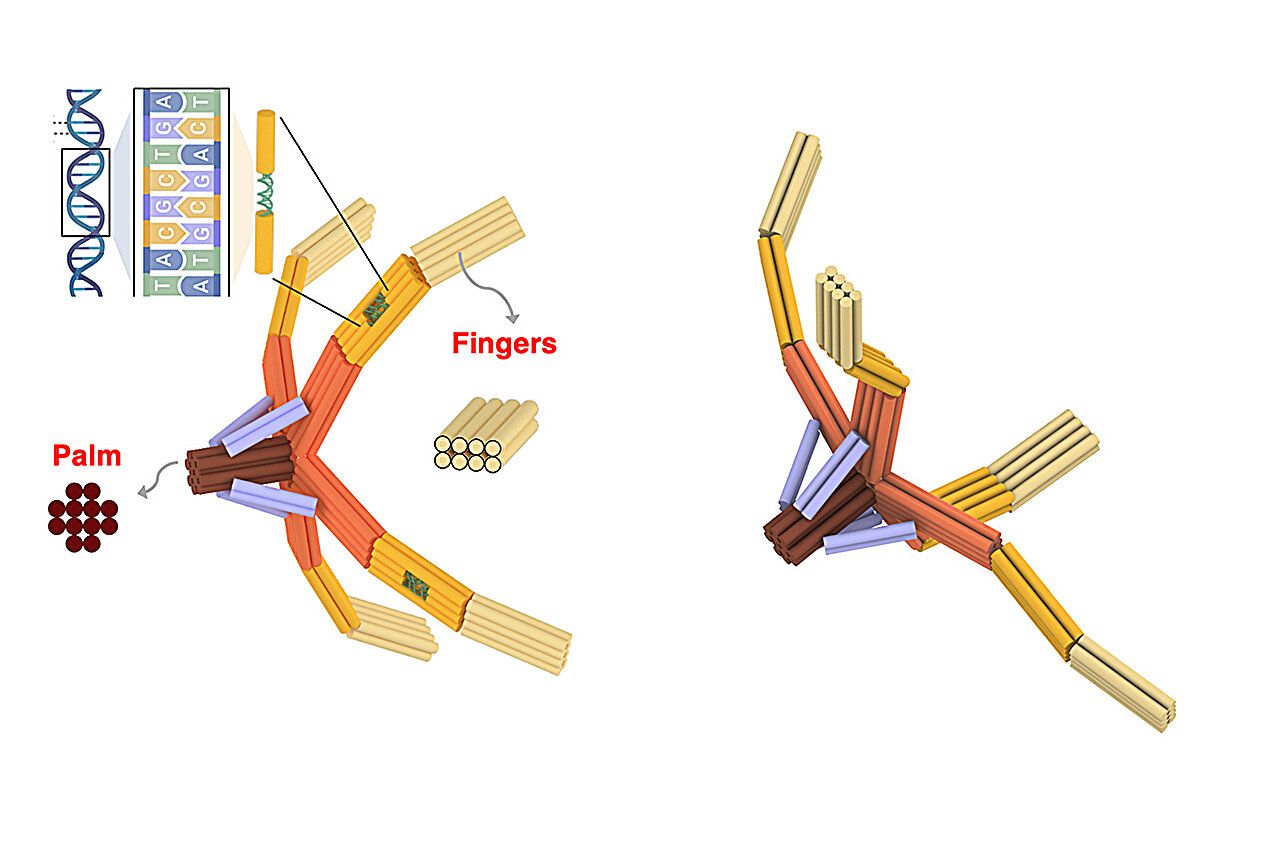This nanometric robotic hand can grab viruses (example with COVID-19)
Follow us on Google News (click on ☆)

Artistic representation of NanoGrippers capturing a COVID-19 virus.
Credit: Xing Wang, University of Illinois
Each NanoGripper finger is programmed to latch onto a specific target, such as the spike protein of the virus responsible for COVID-19. When the fingers close, a light signal is triggered, allowing for the rapid detection of the virus. A direct application is a fast and ultra-sensitive diagnostic test, developed in collaboration with experts in photonic sensors.
The performance of this test rivals that of molecular PCR tests, often considered the gold standard. However, where the NanoGripper stands out is in its speed: diagnosis in 30 minutes, while detecting the entire virus, in contrast to slower conventional approaches.
Beyond diagnostics, this innovation paves the way for preventive strategies. In experiments on cell cultures, NanoGrippers prevented COVID-19 viruses from entering cells. By binding to viral proteins, they effectively neutralize the virus's ability to infect. The concept of a nasal spray based on NanoGrippers to block respiratory viruses is now being seriously considered.
The adaptability of the NanoGripper is another major advantage. With adjustments, these molecular robots could target other pathogens, such as HIV or influenza viruses. In personalized medicine, they could even be used to deliver treatments directly to specific cancer cells.

Inspired by the human hand or bird claws, the NanoGripper features four fingers and a palm, all folded from a single piece of DNA.
Credit: Xing Wang, University of Illinois
However, researchers emphasize that additional tests will be required before considering clinical use. The potential of this technology to revolutionize detection and therapy is undeniable.